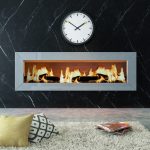If you’re considering stone for your fireplace surround, you have a number of excellent options. Natural stone is one of the most popular materials for fireplace surrounds for a number of reasons. First, because the fireplace is often the focal...
Read More
Marble and soapstone are often used in luxury home design. Both stones are suitable for kitchen, bath or bar countertops. While they both offer class and elegance, the color and style of the stones are likely to be the deciding factor...
Read More
Granite and Marble are both all natural stone materials, they are similar in many ways. Learn more about these types of stone countertops. Marble is a higher-end product that requires more care than Granite, however it offers a timeless elegance...
Read More
Granite and Quartz are both great choices for a kitchen, bathroom or bar countertop. Learn more about these two countertop options. The two materials are very similar in price and durability, and choosing often boils down to a few personal...
Read More





